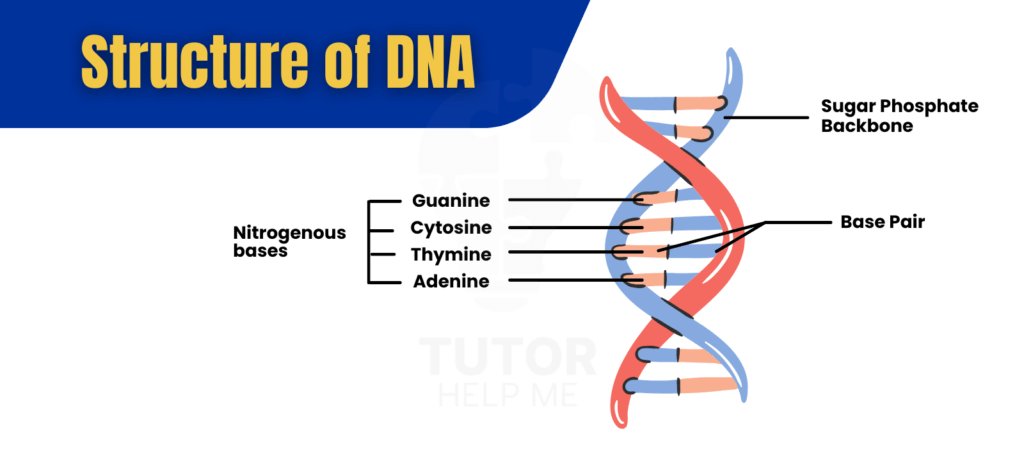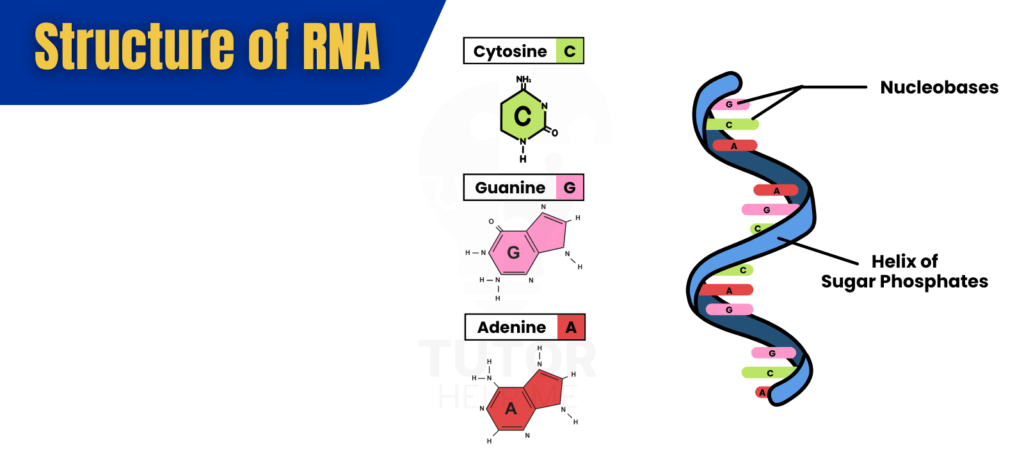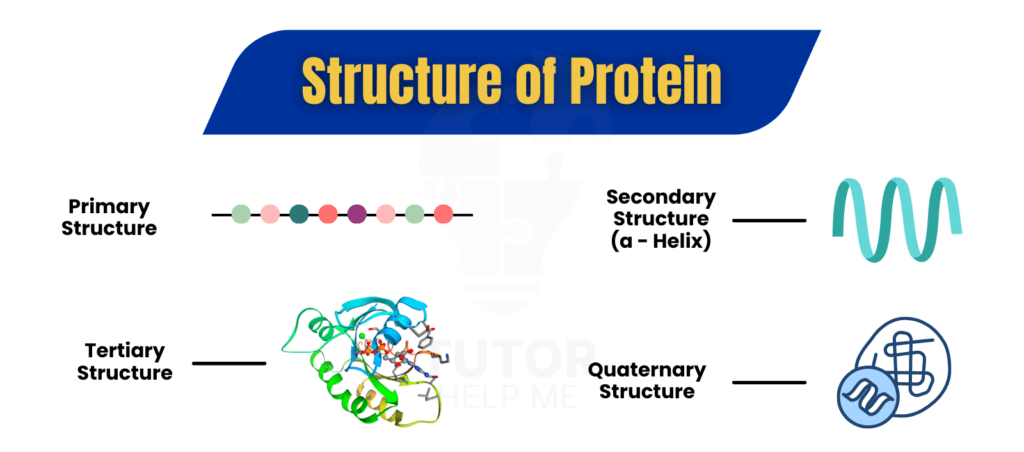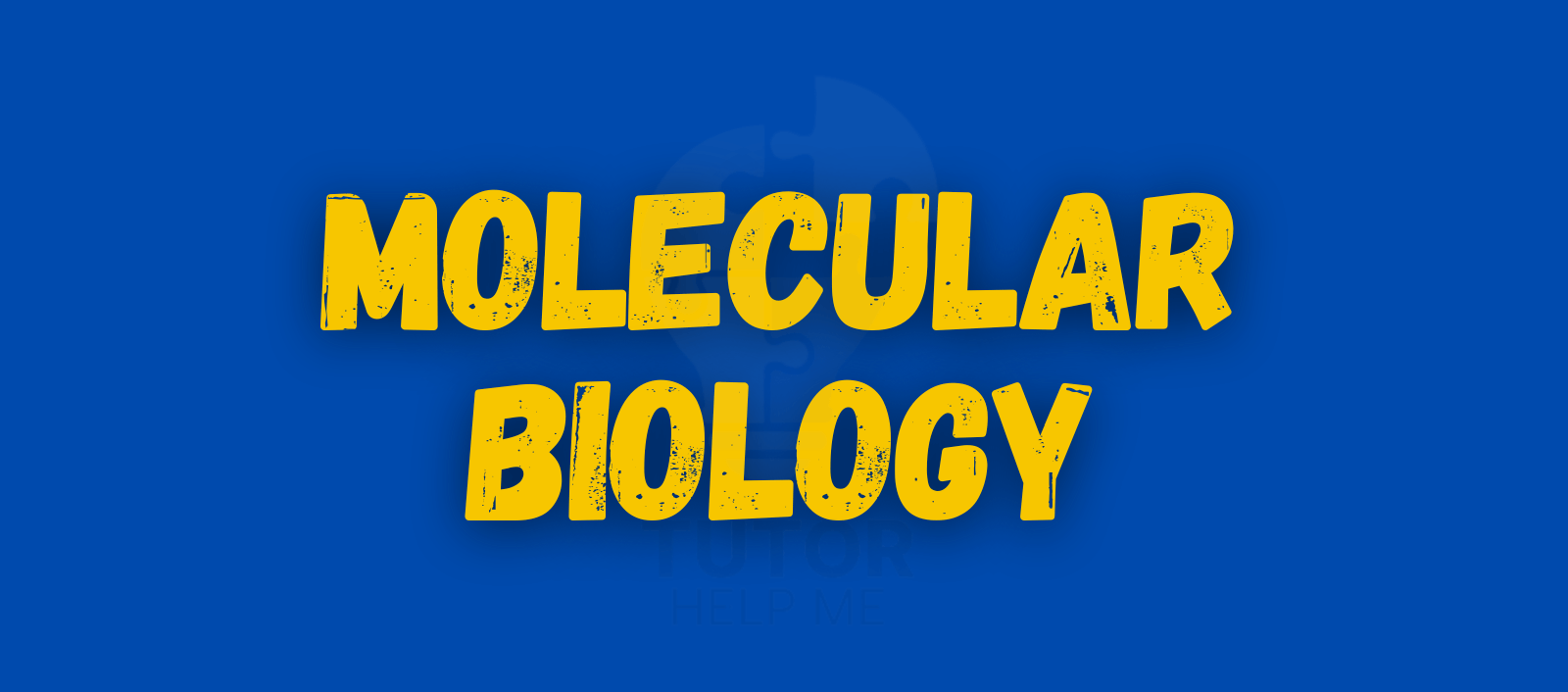Molecular biology is the branch of science that studies the structure and function of genetic material, focusing on DNA, RNA, and proteins.
It explains how genes store and transmit genetic information and how gene expression leads to the production of proteins.
The central dogma of molecular biology describes the process in which DNA is transcribed into RNA and then translated into proteins, the building blocks of life.
Why is Molecular Biology Important?
Molecular biology is essential in genetics, medicine, and biotechnology. It helps scientists understand genetic disorders, develop targeted therapies, and improve gene editing techniques like CRISPR-Cas9.
This field is also crucial for genetic engineering, where researchers modify DNA to improve crops, treat diseases, and advance biotechnology.
What is DNA?
Deoxyribonucleic acid (DNA) is the molecule that carries genetic instructions. It is composed of nucleic acids arranged in a double helix structure, with base pairs forming the rungs of the helix.
These base pairs include Adenine (A) with Thymine (T) and Cytosine (C) with Guanine (G). DNA is organized into chromosomes, which contain genes and alleles that determine traits.
Structure of DNA
The double helix structure of DNA was discovered by James Watson and Francis Crick in 1953. This structure resembles a twisted ladder, where:
- The sides of the ladder are made of alternating sugar (deoxyribose) and phosphate molecules.
- The rungs of the ladder are formed by base pairs (Adenine-Thymine and Cytosine-Guanine), held together by hydrogen bonds.

Key Features of DNA Structure:
- Double-Stranded: Two complementary strands run in opposite directions (antiparallel).
- Base Pairing Rule: Adenine (A) always pairs with Thymine (T), and Cytosine (C) pairs with Guanine (G).
- Helical Shape: The strands twist into a stable double helix.
- Chromosomal Organization: DNA is tightly packed into chromosomes, ensuring efficient genetic information storage.
Function of DNA
The primary function of DNA is genetic information storage. It serves as a template for RNA synthesis, ensuring that the right proteins are produced during transcription and translation.
DNA also plays a key role in inheritance, passing traits from one generation to the next.
How DNA Copies Itself for Cell Division
DNA replication is a fundamental process that ensures each new cell receives an identical copy of genetic material. It occurs in three steps:
- Unwinding the DNA Strand: The enzyme helicase breaks the hydrogen bonds between base pairs, separating the two strands.
- Base Pairing: The enzyme DNA polymerase adds complementary nucleotides to form a new strand.
- Formation of Two Identical DNA Molecules: The process results in two identical DNA strands, ensuring accurate genetic transmission.
Role of Enzymes in DNA Replication
- Helicase: Unzips the DNA double helix.
- DNA Polymerase: Synthesizes the new DNA strand.
- Ligase: Joins DNA fragments, sealing gaps in the backbone.
Types of DNA Mutations and Their Effects
A mutation is a change in the DNA sequence that can affect genetic expression. Mutations occur naturally but can also be caused by radiation, chemicals, or viruses. The main types include:
- Point Mutations – A single nucleotide change (e.g., sickle cell anemia).
- Insertions and Deletions – Extra or missing nucleotides that can shift the reading frame.
- Chromosomal Mutations – Large-scale changes that affect multiple genes.
Importance in Evolution and Genetic Disorders
Mutations contribute to genetic variability, driving evolution by introducing new traits. However, harmful mutations can lead to genetic disorders like cystic fibrosis or cancer.
DNA repair mechanisms, such as epigenetics and DNA methylation, help correct errors and maintain stability.
What is RNA?
Ribonucleic acid (RNA) is a nucleic acid that plays a crucial role in gene expression by transmitting genetic instructions from DNA to make proteins.
Unlike deoxyribonucleic acid (DNA), RNA is usually single-stranded and contains ribose sugar instead of deoxyribose. Instead of thymine (T), RNA has uracil (U), which pairs with adenine (A).
Structure and Types of RNA
RNA exists in different forms, each serving a specific function in protein synthesis:
- Messenger RNA (mRNA): Carries genetic instructions from DNA to ribosomes.
- Transfer RNA (tRNA): Transfers amino acids to the ribosome during protein assembly.
- Ribosomal RNA (rRNA): Forms the structural and functional core of ribosomes.

Additional types include microRNA (miRNA) and small interfering RNA (siRNA), which regulate gene expression through RNA interference (RNAi).
Transcription: From DNA to RNA
Transcription is the first step of gene expression, where RNA polymerase synthesizes RNA from a DNA template. The process occurs in three main steps:
- Initiation: RNA polymerase binds to a promoter region on DNA.
- Elongation: The enzyme reads the DNA sequence and assembles a complementary RNA strand.
- Termination: The newly formed RNA strand is released.
After transcription, RNA splicing removes non-coding regions (introns) from mRNA, allowing only coding regions (exons) to be translated into proteins.
Importance of mRNA in Protein Synthesis
mRNA serves as the direct template for protein synthesis, guiding ribosomes in assembling amino acids in the correct sequence based on the genetic code.
Differences Between RNA and DNA
| Feature | DNA (Deoxyribonucleic Acid) | RNA (Ribonucleic Acid) |
|---|---|---|
| Sugar Type | Deoxyribose | Ribose |
| Strands | Double-stranded (Double Helix) | Single-stranded |
| Base Pairs | Adenine (A) – Thymine (T), Cytosine (C) – Guanine (G) | Adenine (A) – Uracil (U), Cytosine (C) – Guanine (G) |
| Stability | More stable, resists mutations | Less stable, easily degrades |
| Function | Stores and transmits genetic information | Helps in protein synthesis and gene regulation |
| Location | Primarily in the nucleus | Found in both nucleus and cytoplasm |
| Types | Only one type | Multiple types (mRNA, tRNA, rRNA, miRNA, siRNA) |
| Role in Protein Synthesis | Acts as a template for RNA transcription | Directly involved in translation and protein formation |
| Replication | Self-replicating | Synthesized from DNA during transcription |
What are Proteins?
Proteins are complex molecules made of amino acids, essential for nearly all biological functions. They perform various roles, including enzymes, structural components, and signaling molecules.
Amino Acids and Protein Structure
Proteins are made of polypeptides, which are chains of amino acids. Their function depends on their four levels of structure:
- Primary Structure: The amino acid sequence.
- Secondary Structure: Folding into α-helices and β-sheets.
- Tertiary Structure: Three-dimensional folding based on interactions between amino acids.
- Quaternary Structure: Multiple polypeptides assembling into a functional protein.

Role of Proteins in Cellular Functions and Metabolism
Proteins are involved in:
- Enzyme activity (e.g., DNA polymerase for DNA replication).
- Cell structure (e.g., actin and collagen).
- Signal transmission (e.g., hormones and receptors).
Translation: From RNA to Protein
Translation is the second step of transcription and translation, where ribosomes synthesize proteins based on mRNA sequences. It consists of:
- Initiation: The ribosome binds to mRNA and starts reading the sequence.
- Elongation: tRNA brings amino acids, forming a polypeptide chain.
- Termination: The completed protein is released for further modifications.
The Genetic Code and Ribosome Function
The genetic code consists of codons, three-letter sequences on mRNA, each specifying an amino acid. Ribosomes act as molecular machines that read mRNA and assemble proteins accordingly.
Molecular Biology in Medicine and Biotechnology
Molecular biology has transformed modern medicine and biotechnology by enabling scientists to understand and manipulate genetic material. Advances in gene editing, DNA sequencing, and genetic engineering have led to breakthroughs in disease treatment, drug development, and personalized medicine.
Genetic Engineering and CRISPR
Genetic engineering involves modifying an organism’s nucleic acids to alter its traits. One of the most revolutionary techniques in this field is CRISPR-Cas9, a powerful gene editing tool that allows precise modifications in DNA.
Applications of CRISPR in Medicine:
- Correcting Genetic Disorders: CRISPR can fix mutations causing diseases like sickle cell anemia and cystic fibrosis.
- Cancer Treatment: Scientists use CRISPR to target and disable cancerous genes.
- Developing Disease-Resistant Organisms: CRISPR is used in biotechnology to create plants and animals resistant to diseases.
Disease Research
Molecular biology plays a vital role in studying diseases at the genetic level. By analyzing genes and alleles, researchers can identify mutations responsible for various conditions, including cancer and neurodegenerative diseases.
Key Techniques in Disease Research:
- DNA Sequencing: Helps identify mutations in patients’ genomes.
- RNA Sequencing: Provides insights into gene expression patterns in diseases.
- Epigenetic Modifications: Studies how DNA methylation and histone modifications affect disease progression.
Understanding these mechanisms allows scientists to develop targeted therapies and preventive measures for genetic disorders.
Drug Development
The central dogma of molecular biology, which describes the process from transcription to translation, helps researchers design drugs that interact with proteins and enzymes involved in diseases.
How Molecular Biology Aids Drug Discovery:
- Protein Engineering: Scientists modify functional proteins to develop new drugs.
- Recombinant DNA Technology: Produces synthetic hormones like insulin.
- Synthetic Biology: Creates artificial biological systems to manufacture pharmaceuticals.
By using PCR (Polymerase Chain Reaction) and biotechnology applications, researchers can rapidly develop vaccines and treatments for emerging diseases.
Conclusion
Molecular biology has revolutionized medicine, genetics, and biotechnology by enabling scientists to understand and manipulate DNA, RNA, and proteins. Techniques like CRISPR, recombinant DNA technology, and genetic engineering continue to drive medical advancements, making it possible to treat genetic disorders and develop innovative therapies.
Read More The Cardiovascular System: Heart and Blood Vessels
FAQ’s
What is central dogma?
The central dogma explains genetic information flow: DNA is transcribed into RNA, which is translated into proteins, determining cellular function.

